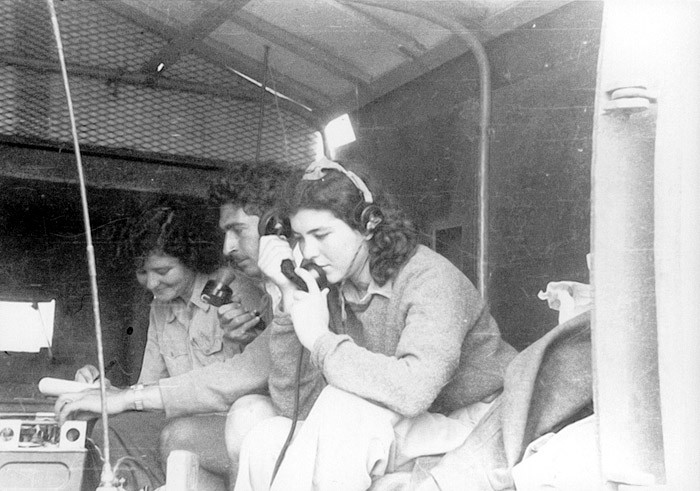Signal and Wireless services
The Signal and Wireless services were of high importance for the Palmach for two main reasons: First, because the Palmach’s units (in their platoons) were scattered around the country. Secondly, because of the underground character of the Palmach that required organizational and operational secrecy.
The Signal and Wireless services were of high importance for the Palmach, for two main reasons: First, because the Palmach’s units (in their platoons) were scattered around the country. Secondly, because of the underground character of the Palmach that required organizational and operational secrecy.
In the beginning of 1942 the Palmach began to set up the Signal and Wireless Services and on March the first course was held. The course’s graduates set up the Palmach’s wireless connection network which was called Tamar (as opposed to the Amnon network which belonged to the Hagana). The services’ first commander was Abraham Tanhelson. Hayim Pradikin (Porat) and Menahem Isa’aki were his followers.
The Signal and Wireless services’ operation fields were:
Constant coordination between the Palmach’s headquarters and its bases spread out in the Kibbutzs and settlements.
Communicating between the Palmach and the Hagana headquarters.
Communicating between the Israeli base and the bases of Hamosad Le’alia Bet (Alia B - the secret organization which arranged, controlled and operated the illegal immigration of Jews to Israel in the years 1938-1948) in Europe, as well as with the Ma’apilim’s (illegal immigrants) ships (whose radio and wireless operators were called Gidonim).
Establishing and operating special or temporary communication stations in the operation headquarters. In the course of the Hebrew Rebellion Movement’s operations the women would fulfill sixty percent of the communication service’s roles. Due to the limited communication means which were in the Hagana and the Palmach’s reach, the main communication roles were to be done in the home front. This fact enabled relatively many women to be part of the Signal and Wireless Services.
The professional members of the Signal and Wireless Services would be recruited to serve for a non limited period of time. Only in special cases would they be released of their duty. Training a man for a communication role would take a long time and effort. In addition, the nature of the job inevitably involved access to sensitive materials. The Signal and Wireless Services’ men were near to the center of action and worked in close contact with the high and important commanders and so they attained their special status in the Palmach.
In the beginning of 1942 the Palmach began to set up the Signal and Wireless Services and on March the first course was held. The course’s graduates set up the Palmach’s wireless connection network which was called Tamar (as opposed to the Amnon network which belonged to the Hagana). The services’ first commander was Abraham Tanhelson. Hayim Pradikin (Porat) and Menahem Isa’aki were his followers.
The Signal and Wireless services’ operation fields were:
Constant coordination between the Palmach’s headquarters and its bases spread out in the Kibbutzs and settlements.
Communicating between the Palmach and the Hagana headquarters.
Communicating between the Israeli base and the bases of Hamosad Le’alia Bet (Alia B - the secret organization which arranged, controlled and operated the illegal immigration of Jews to Israel in the years 1938-1948) in Europe, as well as with the Ma’apilim’s (illegal immigrants) ships (whose radio and wireless operators were called Gidonim).
Establishing and operating special or temporary communication stations in the operation headquarters. In the course of the Hebrew Rebellion Movement’s operations the women would fulfill sixty percent of the communication service’s roles. Due to the limited communication means which were in the Hagana and the Palmach’s reach, the main communication roles were to be done in the home front. This fact enabled relatively many women to be part of the Signal and Wireless Services.
The professional members of the Signal and Wireless Services would be recruited to serve for a non limited period of time. Only in special cases would they be released of their duty. Training a man for a communication role would take a long time and effort. In addition, the nature of the job inevitably involved access to sensitive materials. The Signal and Wireless Services’ men were near to the center of action and worked in close contact with the high and important commanders and so they attained their special status in the Palmach.

